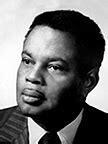Identity elements
Reference code
Name and location of repository
Level of description
Title
Date(s)
Extent
Content and structure elements
Scope and content
October 3, 1887. It began classes with 15 students and two (2) instructors. Thomas DeSaille Tucker (1887-1901), an attorney from Pensacola, was chosen to be the first president. Former State Representative Gibbs joined Mr. Tucker as the second faculty member.
President Nathan B. Young (1901-1923) directed the growth of the College to a four-year degree-granting institution, despite limited resources, offering the Bachelor of Science degree in education, science, home economics, agriculture, and mechanical arts.
Under the administration of John Robert Edward Lee Sr. (1924-1944), the College acquired much of the physical and academic image it has today.
In 1949, under William H. Gray Jr. (1944-1949), expansion and reorganization continued.
Perhaps one of the most outstanding achievements came under the presidency of Dr. George W. Gore (1950-1968).
With Dr. Benjamin L. Perry, Jr., at the helm, the 1970s brought further growth to the University.
The 1980s served as a model for productive development. Under the administration of Dr. Walter L. Smith, the University grew to eleven schools and colleges and a division of graduate studies, research, and continuing education.
In 1985, the construction of a new corridor of history began as Dr. Frederick S. Humphries became the eighth president of Florida A&M University. Under his leadership, FAMU experienced significant growth and unsurpassed accomplishments.
Under Dr. Robinson’s leadership, FAMU continues to thrive, has implemented new recruitment and retention strategies, has strengthened the university’s academic programs, and more!

